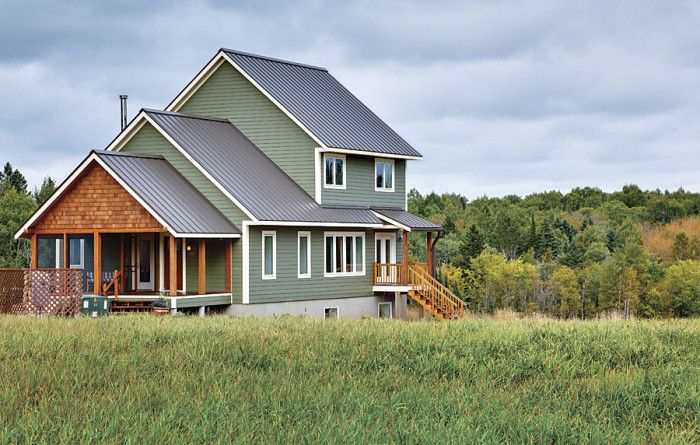More Lessons Learned From an All-Electric House
Six years of energy data offer an architect new insights into high-performance home building

To Fine Homebuilding,
Thank you for publishing one of our projects in your June/July issue (FHB #160), “A Rural Electric House That Works.” We now have six years of energy-use data for the house. The average annual heating energy consumption is 3020kwh (or 10,305kBtu). With 2694 sq. ft. of conditioned space, that’s about 3.8 kBtu per sq. ft. annually in electrical consumption for heating. The superinsulated and extremely airtight building envelope and solar-optimized design have proved ideal for the Minnesota climate, and we are thrilled with the performance of the home.
Now that we’ve had more time to monitor the house, I’d like to share several more “lessons learned” with your readers. We are continuing to design homes with an integrated approach just as we used for this project. We are adapting and refining our designs with feedback from past projects, expanding our own knowledge base, and also using new technologies.
Since modern woodstoves typically require under 50 cfm for combustion and draw, we are still comfortable putting woodstoves in superinsulated, tight houses. However, the potential for backdrafting the woodstove exists when another exhaust appliance is present. We now specify a dedicated makeup air system for any house that has both a woodstove and another exhaust appliance, such as a range hood or conventional clothes dryer.
While opening a window works well for the owners of this home, we decided that the safer approach is an automated system that brings makeup air into the house in the vicinity of the exhaust appliances requiring it. We’ve used independent systems such as the Electro Industries Make Up Air II or the Broan makeup-air kits with a pressure switch. We’ve also successfully used a makeup-air divert system tied to an HRV that essentially reroutes the exhaust stream of air, also operated by a pressure switch.
Since the construction of this home, several more mechanical and appliance choices have entered the market and have proven their effectiveness for low-energy houses, especially with regard to electrical energy. The first is the heat-pump water heater. Because this house has a basement that is over 1000 sq. ft., a heat-pump water heater would be a good option and would use quite a bit less energy than the Marathon water heater we installed.
The second technology we’ve recently begun to use is the heat-pump clothes dryer. This eliminates the clothes dryer as an exhaust appliance, which means one less hole in the envelope; more importantly, it reduces the potential for backdrafting the woodstove.
Finally, advancements in air-source heat pumps (minisplits) suitable for cold climates have allowed us to begin using this very efficient technology for heating (and the occasional desire for cooling) in our region. This has been a game changer for many in our industry who design and build low-energy homes. These units offer appropriately sized, efficient, and effective space-conditioning systems at a lower installation and operating cost than the radiant or forced-air systems we’ve tended to use in the past.
—Rachel Wagner, Wagner Zaun Architecture ([email protected])
Fine Homebuilding Recommended Products
Fine Homebuilding receives a commission for items purchased through links on this site, including Amazon Associates and other affiliate advertising programs.

Not So Big House

Anchor Bolt Marker

The New Carbon Architecture: Building to Cool the Climate


























View Comments
We have a similarly positive experience with our tight 2-year-old all-electric, solar-optimized, super-insulated (R40-60) home in Maine, that coincidentally looks very much like this one. We use all the same technologies mentioned and the house works wonderfully comfortably as an integrated system. We use air heat pumps, heat pump water heater (in large basement), heat-pump dryer, an air-air heat exchanger, and an efficient clean-burning air-tight fireplace with outside makeup air. We have no direct vent in the kitchen (rely on heat-exchanger) to mess with air pressures, and so we avoid cooking things indoors that pollute the air. I haven't calculated the BTU/SF but the house has very low total net-energy consumption. All this new technology is indeed game changing. We absolutely love it.